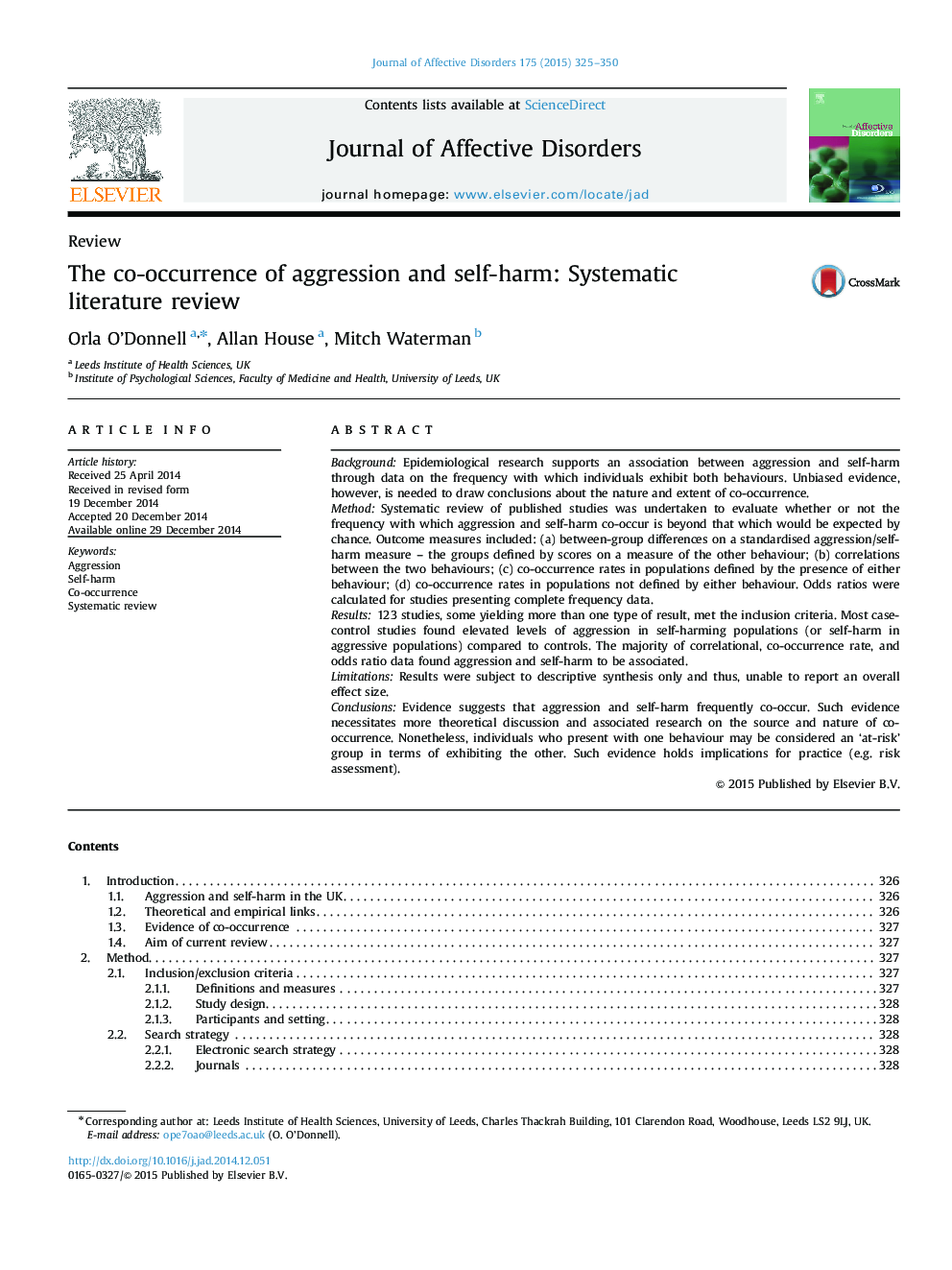| Article ID | Journal | Published Year | Pages | File Type |
|---|---|---|---|---|
| 6232005 | Journal of Affective Disorders | 2015 | 26 Pages |
BackgroundEpidemiological research supports an association between aggression and self-harm through data on the frequency with which individuals exhibit both behaviours. Unbiased evidence, however, is needed to draw conclusions about the nature and extent of co-occurrence.MethodSystematic review of published studies was undertaken to evaluate whether or not the frequency with which aggression and self-harm co-occur is beyond that which would be expected by chance. Outcome measures included: (a) between-group differences on a standardised aggression/self-harm measure - the groups defined by scores on a measure of the other behaviour; (b) correlations between the two behaviours; (c) co-occurrence rates in populations defined by the presence of either behaviour; (d) co-occurrence rates in populations not defined by either behaviour. Odds ratios were calculated for studies presenting complete frequency data.Results123 studies, some yielding more than one type of result, met the inclusion criteria. Most case-control studies found elevated levels of aggression in self-harming populations (or self-harm in aggressive populations) compared to controls. The majority of correlational, co-occurrence rate, and odds ratio data found aggression and self-harm to be associated.LimitationsResults were subject to descriptive synthesis only and thus, unable to report an overall effect size.ConclusionsEvidence suggests that aggression and self-harm frequently co-occur. Such evidence necessitates more theoretical discussion and associated research on the source and nature of co-occurrence. Nonetheless, individuals who present with one behaviour may be considered an 'at-risk' group in terms of exhibiting the other. Such evidence holds implications for practice (e.g. risk assessment).
